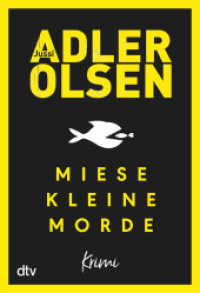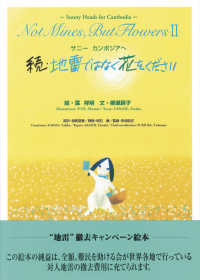- ホーム
- > 洋書
- > 英文書
- > Business / Economics
Full Description
The development of Critical Realism (CR), as a philosophy of science, is generally attributed to a series of books by Roy Bhaskar. It has proven to be influential, not least because it has an affinity with many people's views about the way the world fits together, both within and outside of academia. Whilst there are numerous contributions outlining CR theory in sociological and organizational research, as well as general texts about realist ontology, work delineating the consequences of these views for research practice is an emerging area of interest.
This book aims to fill a significant gap in the literature by providing a practical guide to the application of CR in empirical research projects. More specifically, it explores the methodological consequences of committing to a CR ontology--the assumptions that researchers from this tradition make about the nature of reality. These assumptions are important because ontological commitments, which relate what we believe exists, often affect our epistemological concerns, which relate to our beliefs about how whatever exists can be studied and known. Thus, for a researcher, ontology and epistemology are important because they have consequences for the possibilities and limits of the research methods, techniques, and analyses that they employ.
The book explains what CR is and outlines the logic of research design. In a series of chapters on major social science research methods, purpose-written by experts in the relevant technique, the book contains extended illustration of how to conduct inquiry using CR.
Contents
Foreword ; 1. Critical Realism as an Empirical Project: A Beginner s Guide ; 2. Critical Realism, Research Techniques, and Research Designs ; 3. Employing a Form of Critical Realist Discourse Analysis for Identity Research: An Example from Women s Talk of Motherhood, Childcare and Employment ; 4. Researching Identity: a Critical Realist Approach ; 5. Critical Realism and Grounded Theory ; 6. Critical Realism and Interviewing Subjects ; 7. Critical Realism and Ethnography ; 8. Critical Realism and the Organizational Case Study: A Guide to Discovering Institutional Mechanisms ; 9. Comparing Cases ; 10. Critical Realism and International Comparative Research ; 11. Pulling the Levers of Agency: Implementing Critical Realist Action Research ; 12. History and Documents in Critical Realism ; 13. Critical Realism and Mixed Methods Research: Combining the Extensive and Intensive at Multiple Levels ; 14. Realist Synthesis ; 15. Probability and Models ; 16. An Appraisal of the Contribution of Critical Realism to Qualitative and Quantitative Research Methodology: Is Dialectics the Way Forward? ; 17. Concluding Comments








